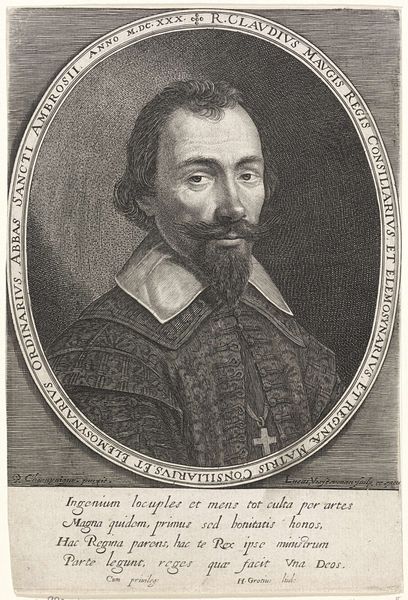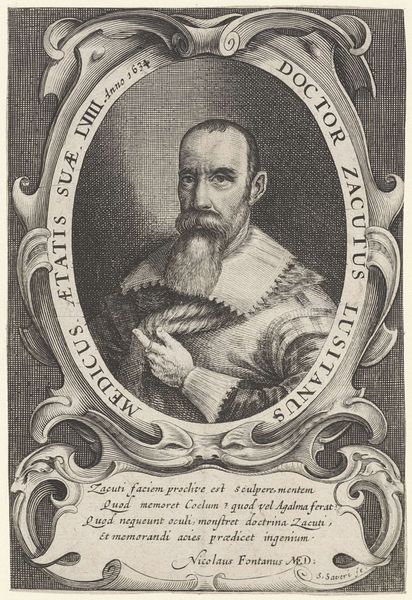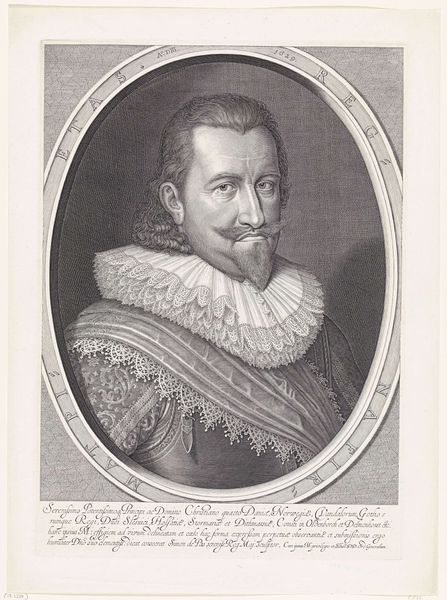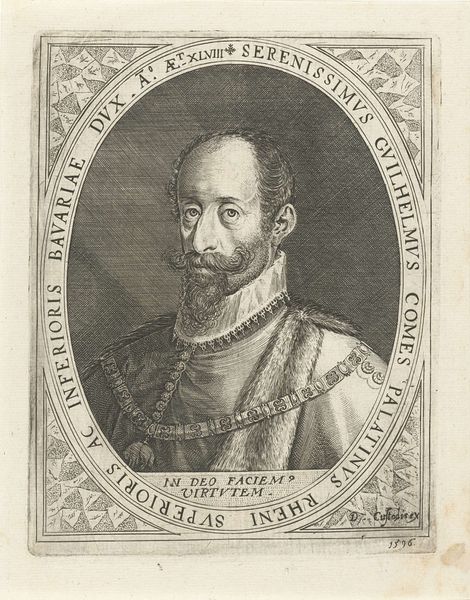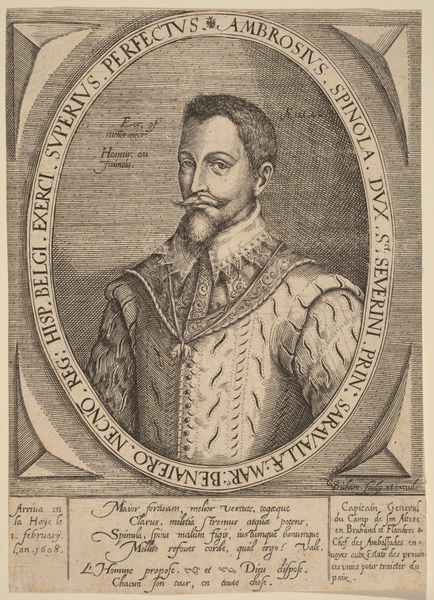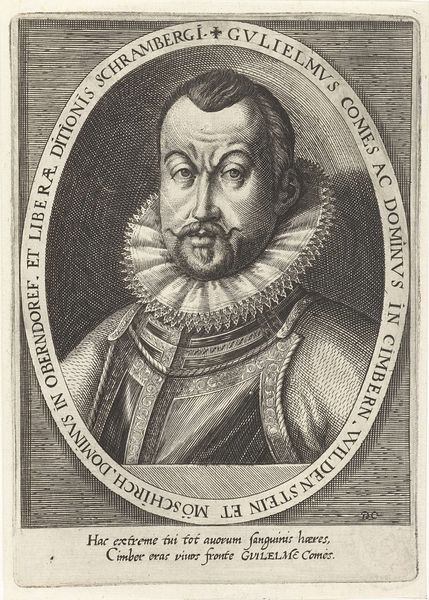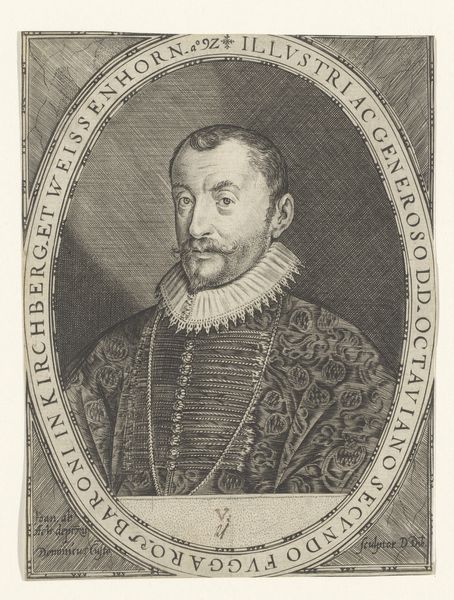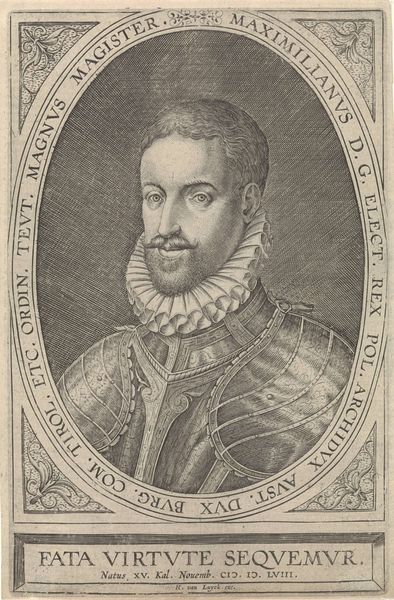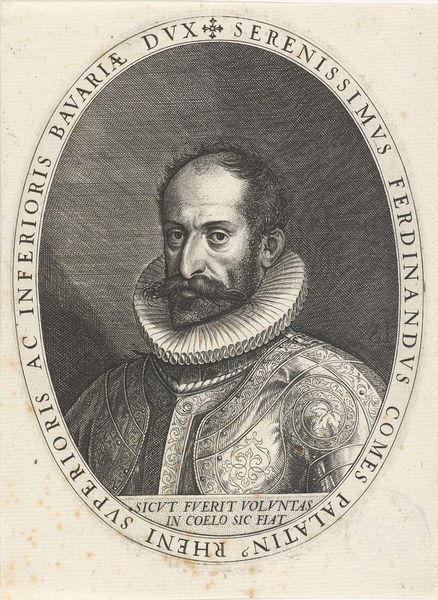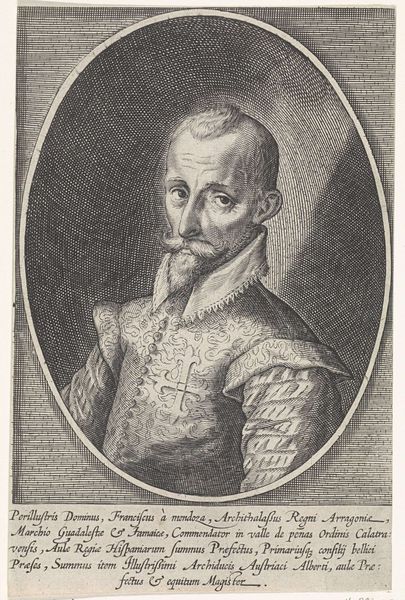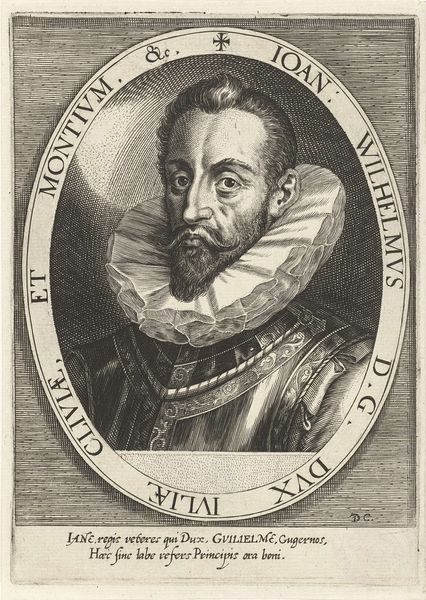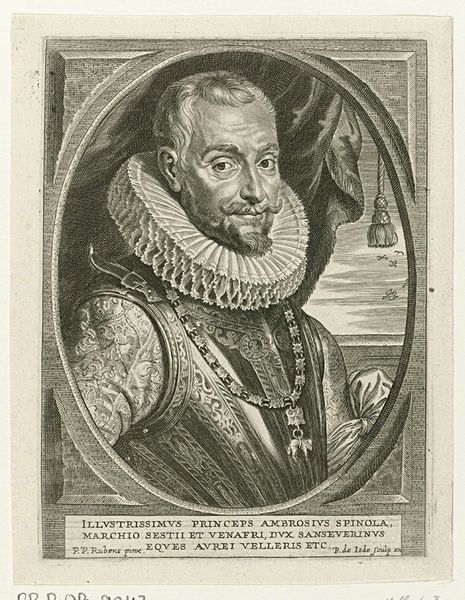
engraving
#
portrait
#
baroque
#
old engraving style
#
historical photography
#
portrait reference
#
history-painting
#
engraving
Dimensions: height 310 mm, width 197 mm
Copyright: Rijks Museum: Open Domain
Curator: Let’s consider this engraving titled "Portret van Adriaan van den Spiegel." It dates back to 1645 and was crafted by Jeremias Falck. The image presents a three-quarter view of its subject, framed within an oval border containing detailed lettering. Editor: My first impression is of formality. The fine lines of the engraving create a somewhat austere and intellectual mood, befitting the subject, no doubt. There is a concentration of visual activity at the top of the image that contrasts the empty space below. Curator: Indeed, the artistry lies in Falck’s rendering of texture and depth with a relatively limited medium, engraving. He utilizes the contrast between the darkness of the engraved lines and the white paper to build up the portrait. Also, considering the historical context of printmaking, this would have served as a more easily reproducible and disseminated image of Van den Spiegel, influencing his public perception. Editor: Notice the way the formal elements, like the line work around the face, contribute to a perception of realism and idealization simultaneously. The engraver has used precise details and clear outlines that allow the likeness of Van den Spiegel to emerge as a distinct persona. I would assume there's an effort at play to not only document physical traits but also project certain societal values onto the person through the design, but I am no expert on medical history or portraiture! Curator: It certainly encapsulates an ideal image of the learned professor and gentleman, aligning with Baroque portrait conventions. And the details of the chains and rich materials that create this visual texture you observe denote status and profession, emphasizing both intellectual and economic capital. Editor: Exactly. The portrait encapsulates certain values inherent in visual and political representation—in any case, this Baroque image demonstrates a meticulous dedication to realism. Curator: Understanding its accessibility and wider distribution, facilitated by the medium itself, gives insight into the production and consumption of portraits beyond the painted canvas. It opens a new dimension to exploring themes of representation. Editor: Thinking about that level of detail—how those lines construct and convey not only the material richness of the period’s fashion but also the status implied—is, for me, the core pleasure of observing this type of work.
Comments
No comments
Be the first to comment and join the conversation on the ultimate creative platform.
